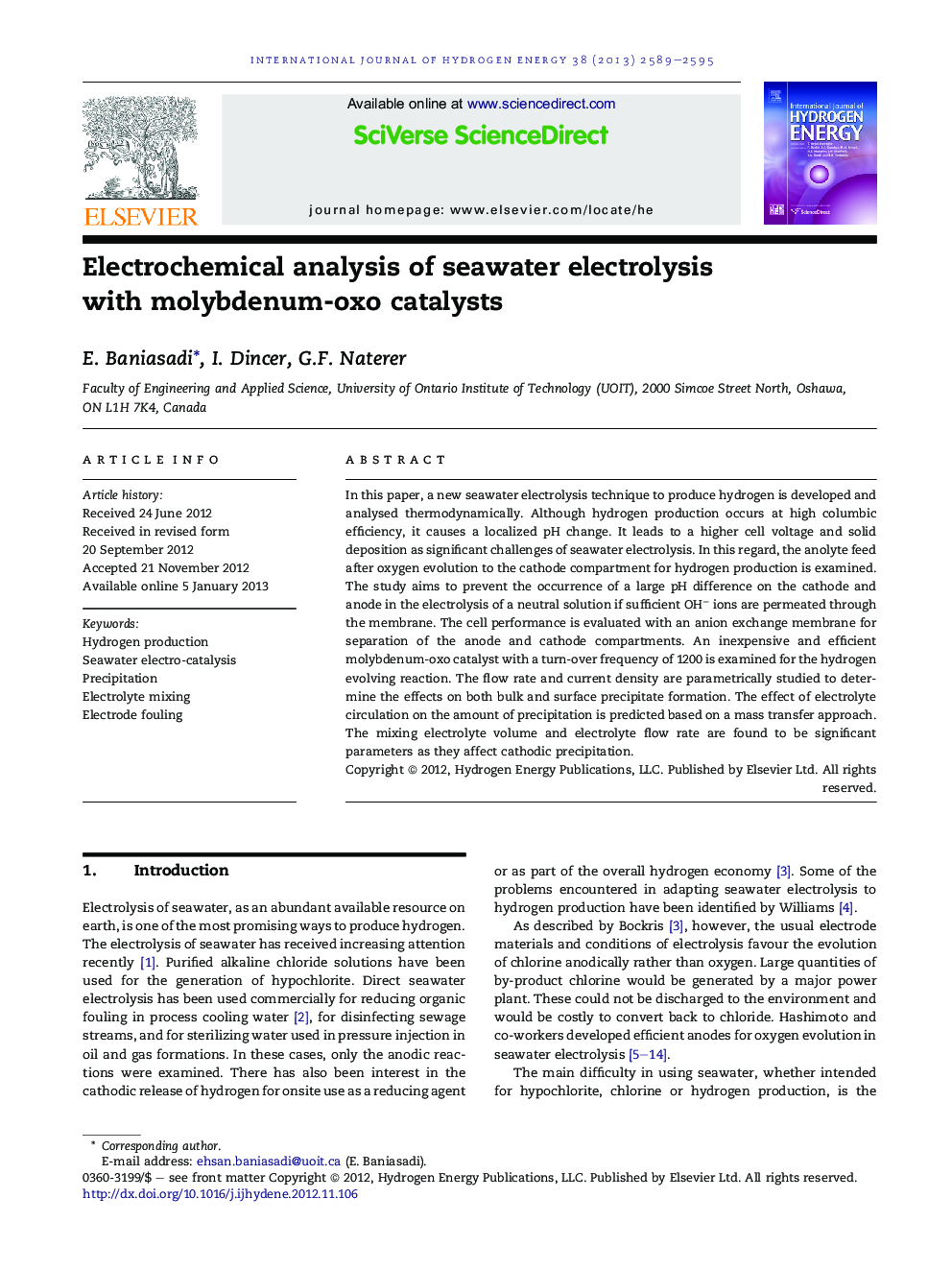| Article ID | Journal | Published Year | Pages | File Type |
|---|---|---|---|---|
| 1273791 | International Journal of Hydrogen Energy | 2013 | 7 Pages |
In this paper, a new seawater electrolysis technique to produce hydrogen is developed and analysed thermodynamically. Although hydrogen production occurs at high columbic efficiency, it causes a localized pH change. It leads to a higher cell voltage and solid deposition as significant challenges of seawater electrolysis. In this regard, the anolyte feed after oxygen evolution to the cathode compartment for hydrogen production is examined. The study aims to prevent the occurrence of a large pH difference on the cathode and anode in the electrolysis of a neutral solution if sufficient OH− ions are permeated through the membrane. The cell performance is evaluated with an anion exchange membrane for separation of the anode and cathode compartments. An inexpensive and efficient molybdenum-oxo catalyst with a turn-over frequency of 1200 is examined for the hydrogen evolving reaction. The flow rate and current density are parametrically studied to determine the effects on both bulk and surface precipitate formation. The effect of electrolyte circulation on the amount of precipitation is predicted based on a mass transfer approach. The mixing electrolyte volume and electrolyte flow rate are found to be significant parameters as they affect cathodic precipitation.
► We studied the performance of a new electrolysis technique to produce hydrogen. ► Molybdenum-oxo catalyst is examined for the hydrogen evolving reaction. ► The anolyte feed after oxygen evolution to the cathode compartment is examined. ► The effect of electrolyte circulation on the amount of precipitation is predicted. ► The electrolyte mixing volume and electrolyte flow rate are competitive parameters.
